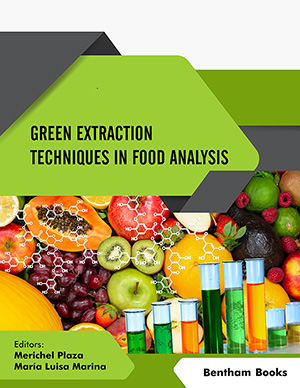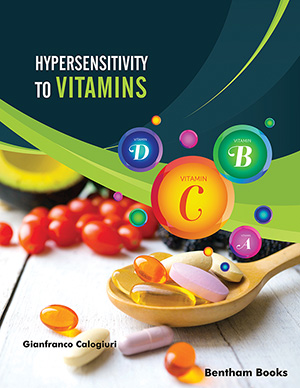Abstract
Abstract: Oxidative stress, proteasomal impairment, mitochondrial dysfunction, and accumulation of abnormal protein aggregates have shovelled a major section of the senior population towards neurodegenerative disorders. Although age, genetic and environmental factors are thought to play a significant role, drug abuse is considered to be a potent trigger in Parkinsonism among the young generation. The present study is a critical examination of herbal resources for attenuation of neurodegeneration.
The following electronic databases have been used to search for literature: MEDLINE, Scopus, PubMed, and EMBAS.
Paying heed to the prevalence of neurodegenerative disorders such as Alzheimer’s and Parkinson’s, the current review encompasses the pathogenesis of neurodegeneration at the cellular level and possible prospects to overcome the challenge sailing through the ocean of herbal boon. The United States’s Alzheimer’s Association states that deaths attributable to heart disease in the country fell by 11% between 2000 and 2015, while deaths from neurodegenerative diseases increased by a staggering 123% making it, the world’s sixth-leading cause of death. The irreversible pathological damage amounts to cognitive loss, dementia, Amyotrophic lateral sclerosis (ALS), Parkinson’s disease (PD) Alzheimer’s disease (AD).
Various herbal drugs like Brahmi, Shankhpushpi, and Amla are reported to be rich in phytoconstituents like flavonoids, glycosides, alkaloids, fatty acids, sterols, tannins, saponins, and terpenes that have remarkable antioxidant potential and could be explored for the same to prevent neuronal necrosis.
It is also believed that herbal medicines are more effective and less toxic than synthetic drugs.
Keywords: Antioxidant, Alzheimer’s, herbal drugs, neurodegeneration, oxidative stress, Parkinson’s.
[http://dx.doi.org/10.1101/cshperspect.a028035] [PMID: 28062563]
[http://dx.doi.org/10.1242/dmm.030205] [PMID: 28468935]
[http://dx.doi.org/10.3389/frym.2018.00070]
[http://dx.doi.org/10.4103/1673-5374.268897] [PMID: 31719244]
[http://dx.doi.org/10.1177/0269881118754680] [PMID: 29444621]
[http://dx.doi.org/10.3389/fncel.2020.00090] [PMID: 32390802]
[http://dx.doi.org/10.1007/s11064-016-2105-8] [PMID: 27873132]
[http://dx.doi.org/10.2174/1570159X16666180911124605] [PMID: 30207234]
[http://dx.doi.org/10.2174/1570159X17666181127125704] [PMID: 30479218]
[http://dx.doi.org/10.1002/ptr.5834] [PMID: 28504367]
[http://dx.doi.org/10.3389/fphar.2018.01555] [PMID: 30941047]
[http://dx.doi.org/10.3390/ijms20102451] [PMID: 31108962]
[http://dx.doi.org/10.1016/S1474-4422(18)30456-3] [PMID: 30497966]
[http://dx.doi.org/10.1016/S1474-4422(18)30403-4] [PMID: 30497964]
[http://dx.doi.org/10.1016/S0140-6736(17)31363-6] [PMID: 28735855]
[http://dx.doi.org/10.1007/s00441-017-2704-y] [PMID: 29064079]
[http://dx.doi.org/10.1016/j.jalz.2016.09.015] [PMID: 27870939]
[http://dx.doi.org/10.1016/j.jalz.2008.03.001] [PMID: 18631983]
[http://dx.doi.org/10.1016/j.bmcl.2018.11.034] [PMID: 30501965]
[http://dx.doi.org/10.3390/ijms21072618] [PMID: 32283806]
[http://dx.doi.org/10.3390/antiox8120608] [PMID: 31801234]
[http://dx.doi.org/10.2174/1871527318666190916141934] [PMID: 31526355]
[http://dx.doi.org/10.1016/j.neuroscience.2010.05.078] [PMID: 20538041]
[http://dx.doi.org/10.4061/2009/972178]
[http://dx.doi.org/10.1007/s11064-012-0811-4] [PMID: 22700087]
[http://dx.doi.org/10.1186/s12974-019-1515-3] [PMID: 31291963]
[http://dx.doi.org/10.4314/ajtcam.v6i1.57073] [PMID: 20162041]
[http://dx.doi.org/10.1089/1096620041224193]
[http://dx.doi.org/10.4103/0976-9668.117025] [PMID: 24082744]
[http://dx.doi.org/10.1179/1476830515Y.0000000016] [PMID: 25842984]
[http://dx.doi.org/10.4103/0253-7613.84958] [PMID: 22021993]
[http://dx.doi.org/10.1002/ptr.4643] [PMID: 22431473]
[http://dx.doi.org/10.1016/j.parkreldis.2015.03.010] [PMID: 25817513]
[http://dx.doi.org/10.1002/mds.27741] [PMID: 31216379]
[http://dx.doi.org/10.1016/j.parkreldis.2019.06.025] [PMID: 31272925]
[http://dx.doi.org/10.1016/j.expneurol.2017.11.010] [PMID: 29155051]
[http://dx.doi.org/10.1371/journal.pbio.2000374]
[http://dx.doi.org/10.3892/br.2016.713] [PMID: 27446544]
[http://dx.doi.org/10.1111/j.1471-4159.2005.03000.x] [PMID: 15773909]
[http://dx.doi.org/10.1016/j.pbb.2006.01.005] [PMID: 16500697]
[http://dx.doi.org/10.5214/ans.0972.7531.200204] [PMID: 25206012]
[http://dx.doi.org/10.1007/s10571-011-9731-0] [PMID: 21744117]
[http://dx.doi.org/10.1155/2016/9436106] [PMID: 26884755]
[http://dx.doi.org/10.1142/S0192415X10008251]
[http://dx.doi.org/10.1016/j.phymed.2012.02.006] [PMID: 22402244]
[http://dx.doi.org/10.1007/s11011-019-00526-w] [PMID: 31834548]
[http://dx.doi.org/10.1080/13880209.2018.1501705] [PMID: 30354840]
[http://dx.doi.org/10.1016/j.jep.2011.02.017] [PMID: 21349320]
[http://dx.doi.org/10.1016/j.pbb.2009.03.008] [PMID: 19327378]
[http://dx.doi.org/10.2131/jts.35.41] [PMID: 20118623]
[http://dx.doi.org/10.1007/978-0-387-46401-5_8] [PMID: 17569212]
[http://dx.doi.org/10.3233/JAD-2010-091459] [PMID: 20182024]
[http://dx.doi.org/10.1002/ptr.5271] [PMID: 25572840]
[http://dx.doi.org/10.4103/0974-8490.89746] [PMID: 22224049]
[http://dx.doi.org/10.2174/092986707782023325] [PMID: 17979711]
[http://dx.doi.org/10.1007/s12035-013-8608-2]
[http://dx.doi.org/10.1248/bpb.32.79] [PMID: 19122285]
[http://dx.doi.org/10.1089/jmf.2013.2965] [PMID: 24712702]
[http://dx.doi.org/10.1179/1743132813Y.0000000293] [PMID: 24620966]
[http://dx.doi.org/10.1111/j.1471-4159.2009.06228.x] [PMID: 19558452]
[http://dx.doi.org/10.1016/j.expneurol.2008.03.006] [PMID: 18495119]
[http://dx.doi.org/10.1016/j.jff.2017.10.047]
[http://dx.doi.org/10.1248/bpb.29.191] [PMID: 16462017]
























